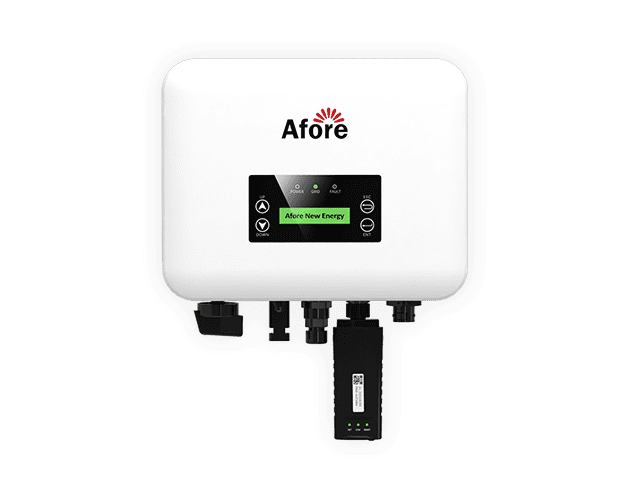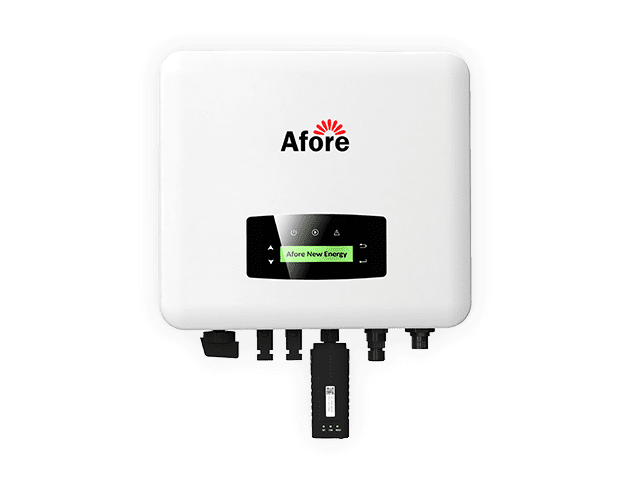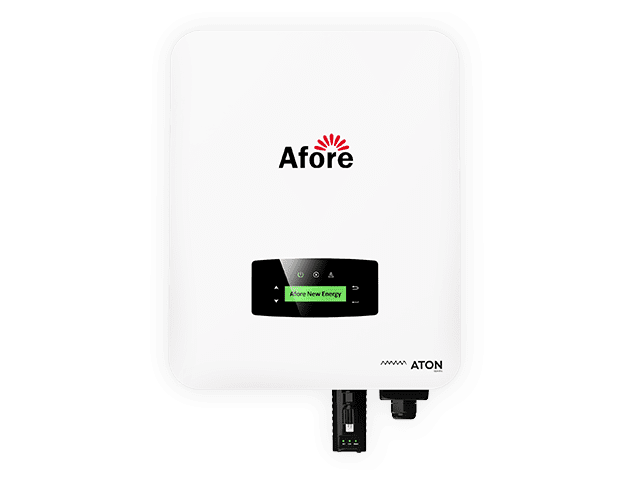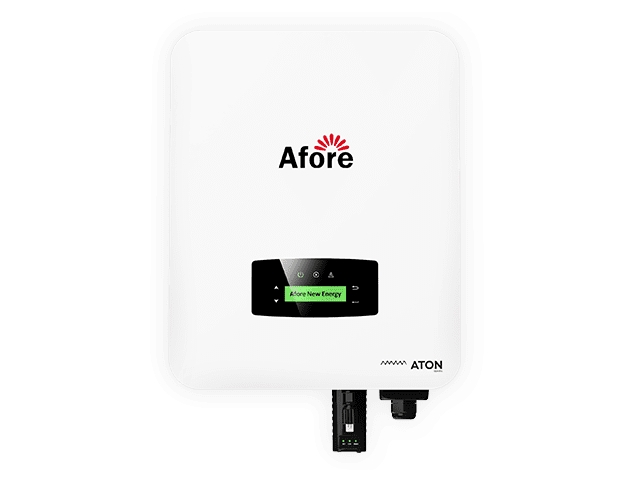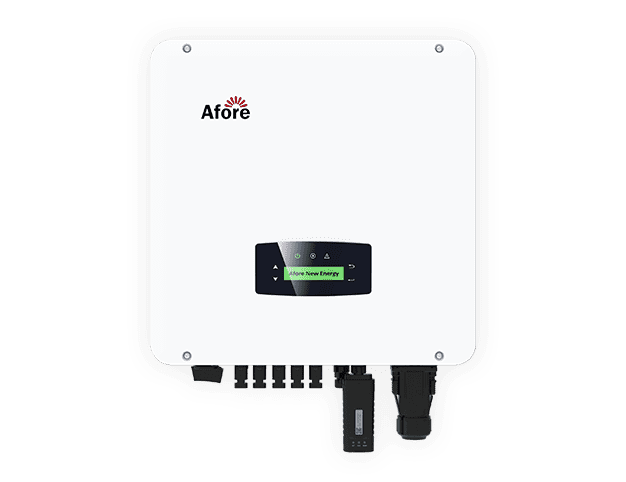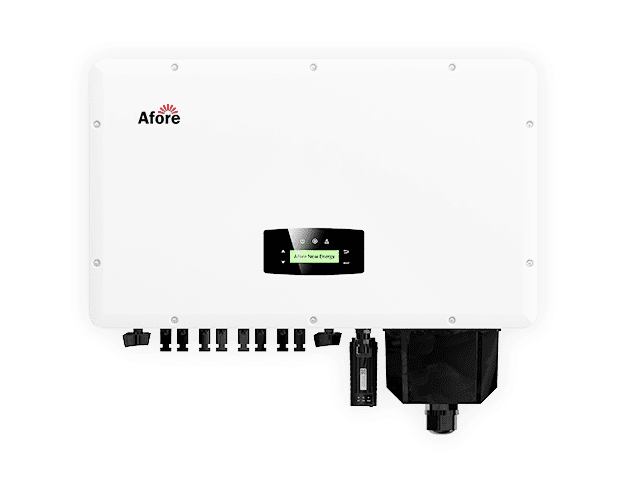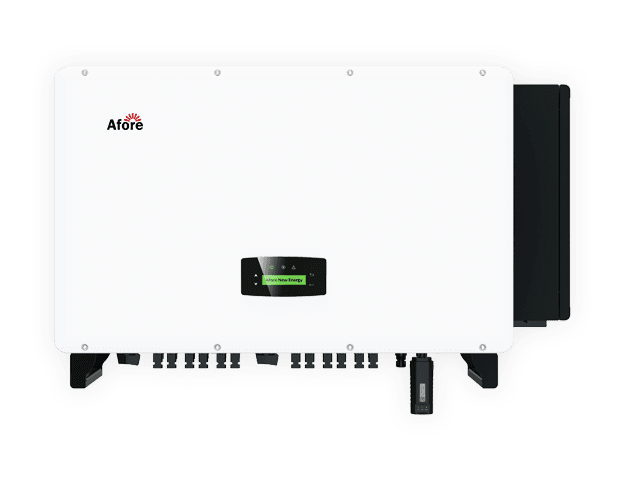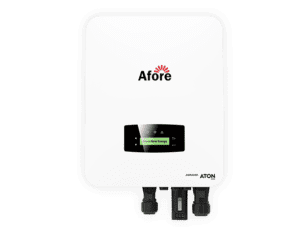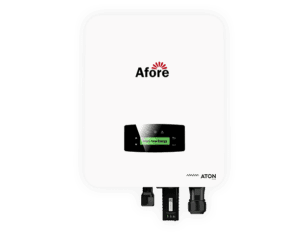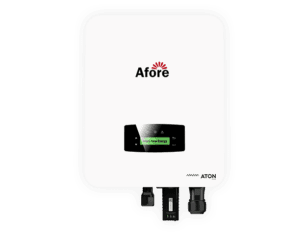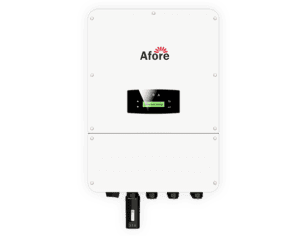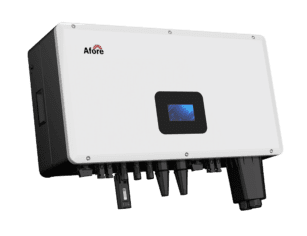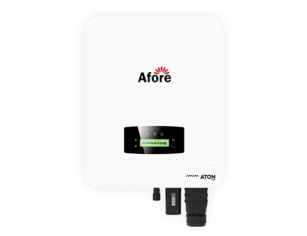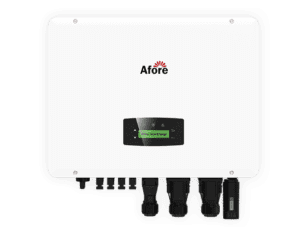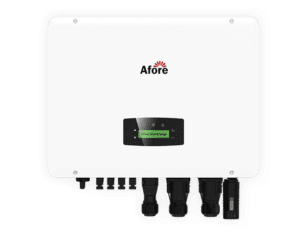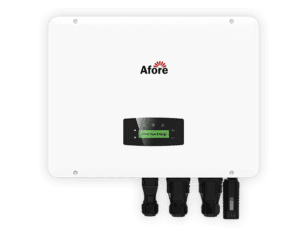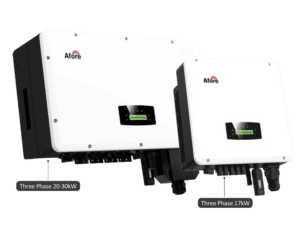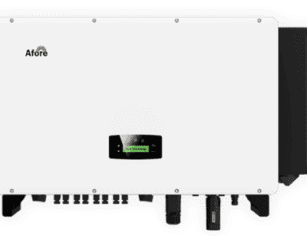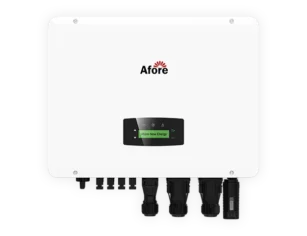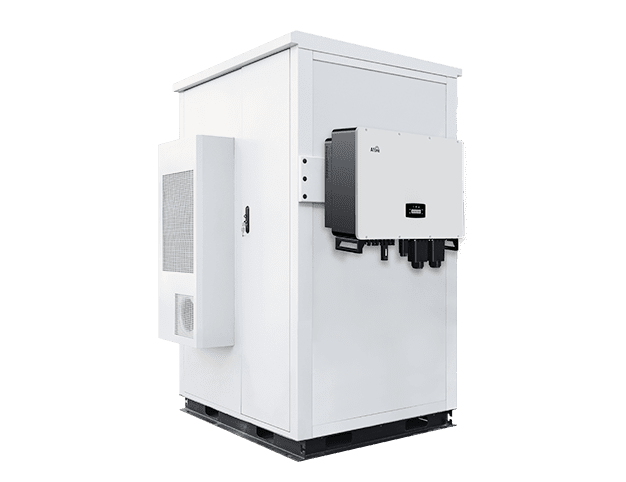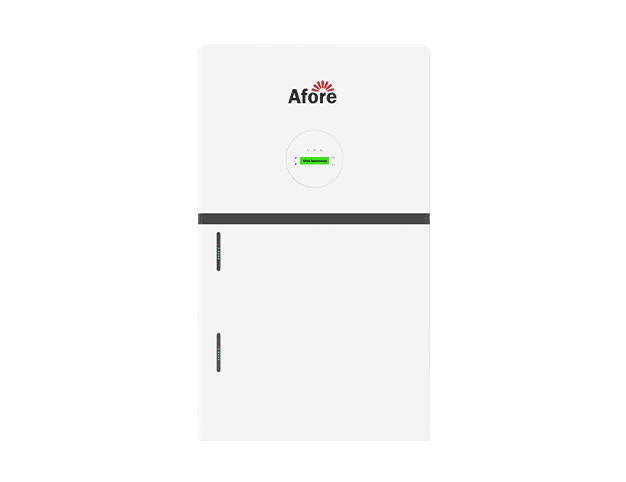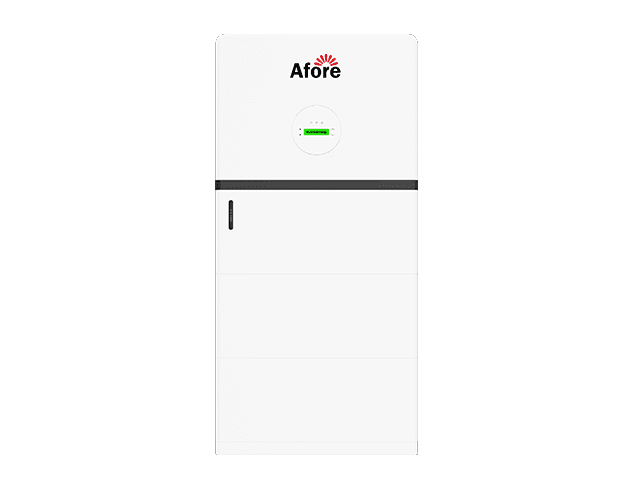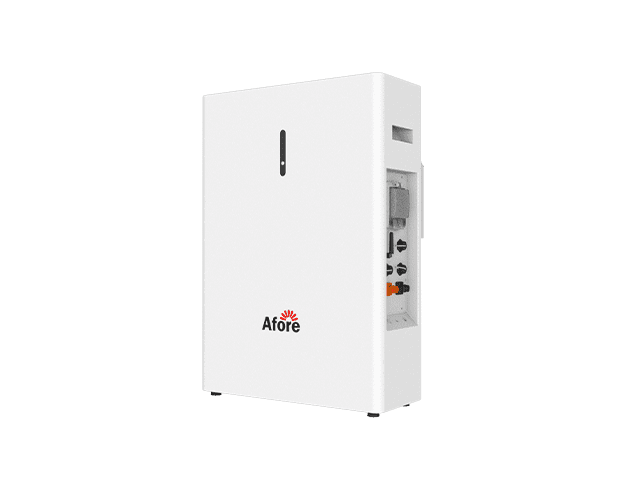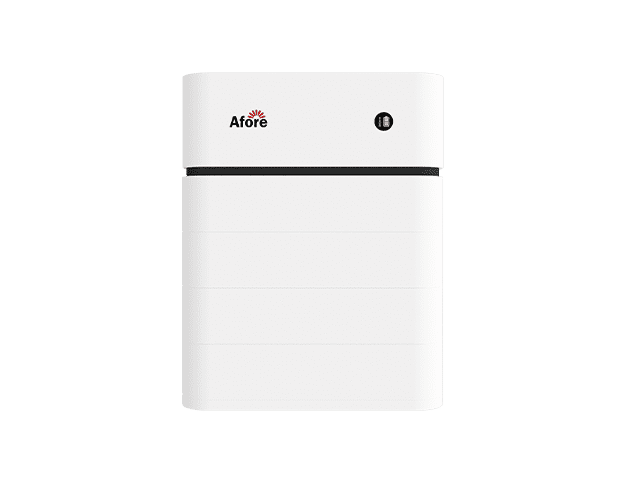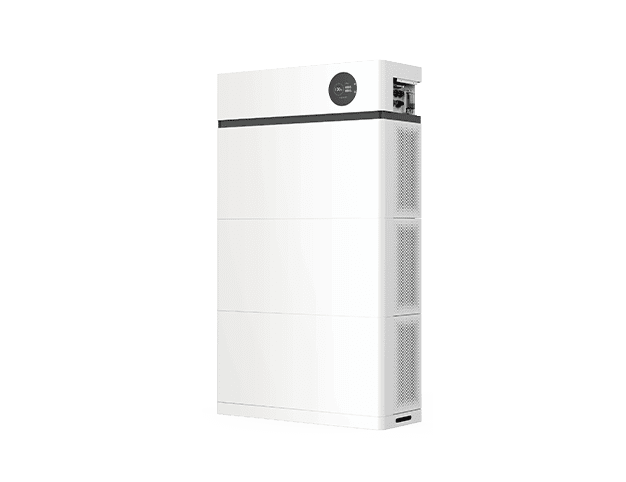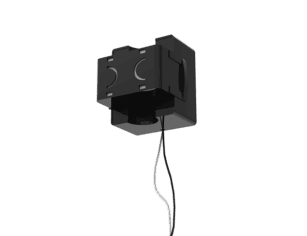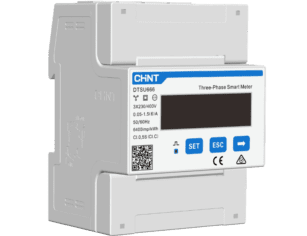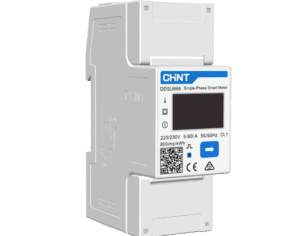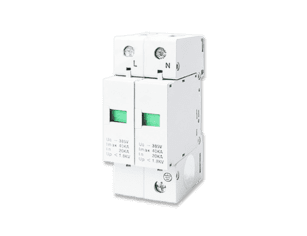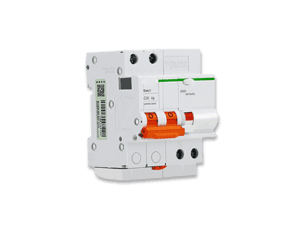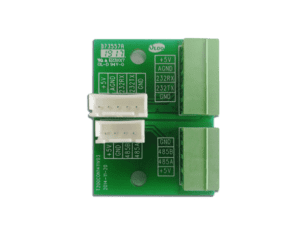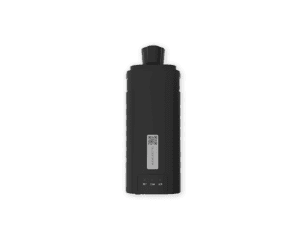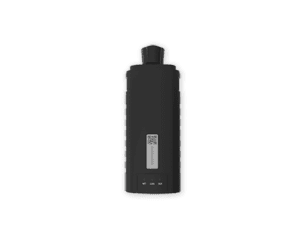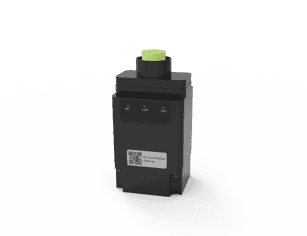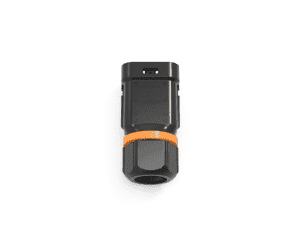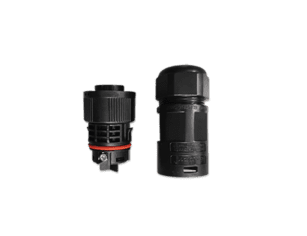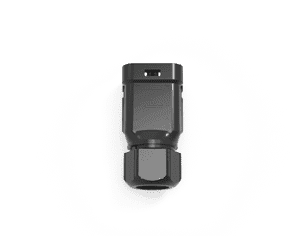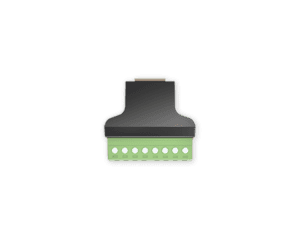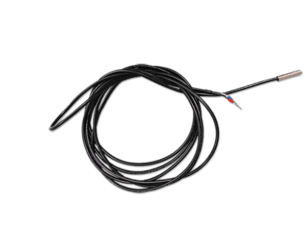Onduleur pour TV : Le guide complet pour alimenter votre télévision n'importe où
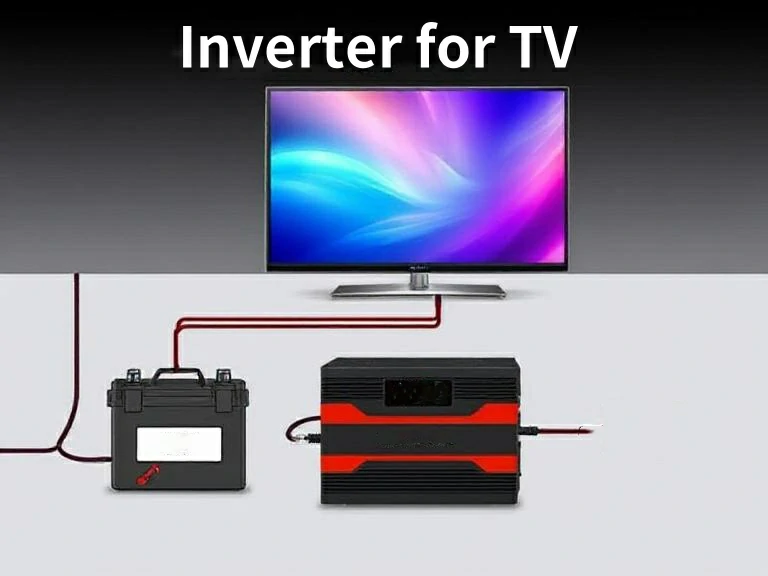
Table des matières
Vous souhaitez regarder vos émissions préférées hors réseau, dans votre véhicule de loisirs ou lors d'une panne de courant ? Trouver le bon onduleur pour la télévision est essentiel pour que cela se fasse sans interruption ni dommage pour vos appareils électroniques. Que vous installiez un onduleur pour la télévision à la maison ou que vous essayiez de déterminer si votre installation TV et 12 volts nécessite un équipement spécial pour votre caravane, ce guide couvre tout ce dont vous avez besoin. Qu'il s'agisse de choisir le meilleur onduleur pour la télévision en fonction de la puissance ou de comprendre combien de temps votre téléviseur fonctionnera sur un onduleur, nous avons répondu à toutes vos questions, de manière claire et pratique.
Comprendre les bases de l'utilisation d'un onduleur pour un téléviseur
Qu'est-ce qu'un onduleur pour un téléviseur ?
À la base, un onduleur pour téléviseur est un appareil qui convertit le courant continu (CC), généralement fourni par des batteries ou des panneaux solaires, en courant alternatif (CA), dont la plupart des téléviseurs ont besoin pour fonctionner. Alors que les maisons sont naturellement câblées pour fournir du courant alternatif à partir du réseau, le fait d'être hors réseau, comme dans un camping-car, un bateau ou une cabane isolée, nécessite un onduleur pour faire fonctionner les appareils ménagers courants tels que la télévision.
Lorsque vous entendez le terme "onduleur pour téléviseur", pensez qu'il s'agit d'un intermédiaire qui veille à ce que votre téléviseur reçoive le type d'électricité qu'il est conçu pour utiliser. Sans lui, le fait de brancher votre téléviseur alimenté en courant alternatif directement sur une batterie de 12 V non seulement ne l'alimenterait pas, mais risquerait même de l'endommager. C'est pourquoi il est essentiel de choisir le bon onduleur pour téléviseur lors de la planification d'une installation de divertissement mobile ou hors réseau.
En outre, les besoins en énergie varient d'un téléviseur à l'autre. Un téléviseur LED de 32 pouces peut ne consommer que 50 à 70 watts, tandis qu'un écran plasma plus grand peut consommer 200 watts ou plus. Il est donc essentiel de dimensionner votre onduleur de manière appropriée, ce que nous verrons en détail plus loin.
Peut-on faire fonctionner un téléviseur sur 12V ?
Oui, il est possible de faire fonctionner un téléviseur sur 12 V, mais cela dépend du type de téléviseur utilisé.
Certains téléviseurs sont spécifiquement conçus pour fonctionner sur une alimentation 12V DC. Ils sont particulièrement répandus dans les caravanes, les bateaux et les véhicules de loisirs. En fait, les modèles TV en 12 volts sont devenus populaires dans la communauté de l'habitat mobile parce qu'ils ne nécessitent pas du tout d'onduleur. Au lieu de cela, ils se connectent directement au système de batterie 12V et sont optimisés pour l'efficacité énergétique.
Mais qu'en est-il si votre téléviseur n'est pas un modèle 12V ? C'est là que l'onduleur pour téléviseur devient indispensable. Les téléviseurs domestiques standard sont conçus pour une alimentation en courant alternatif de 110 V ou 230 V, selon la région où vous vous trouvez. Essayer de faire fonctionner un tel téléviseur directement à partir d'une source de 12 V ne fonctionnera tout simplement pas - vous aurez besoin d'un onduleur pour combler cette lacune.
Bien que la télévision en 12 volts soit une excellente solution à faible consommation d'énergie si votre installation le permet, la plupart des gens comptent encore sur un onduleur pour alimenter leurs téléviseurs standard dans les scénarios hors réseau.
Pourquoi utiliser un onduleur pour la télévision au lieu d'une alimentation directe 12V ?
Si un modèle de TV en 12 volts est disponible, pourquoi utiliser un onduleur à la place ?
1. Un plus grand choix de téléviseurs
Tous les téléviseurs ne sont pas disponibles en version 12V. La plupart des téléviseurs haute définition, des téléviseurs intelligents et des écrans plus grands nécessitent une alimentation CA standard. Si vous souhaitez bénéficier de fonctions modernes telles que des applications de streaming intégrées, des ports HDMI ou une résolution 4K, il est probable que vous recherchiez un modèle alimenté par le courant alternatif. Cela signifie que vous aurez besoin d'un onduleur pour téléviseur afin de le faire fonctionner hors réseau.
2. Stabilité accrue de la puissance
Un onduleur de télévision de haute qualité fournit une alimentation propre et stable, souvent sous la forme d'une onde sinusoïdale pure. Ce point est essentiel, car certains appareils électroniques sensibles, comme les téléviseurs intelligents ou les barres de son, peuvent mal fonctionner, voire être endommagés, lorsqu'ils sont exposés à des signaux sinusoïdaux "sales" ou modifiés. En revanche, une alimentation directe de 12 V peut ne pas réguler la tension de manière aussi cohérente.
3. Systèmes d'alimentation intégrés
De nombreux systèmes solaires pour véhicules de loisirs et hors réseau sont déjà équipés d'onduleurs, ce qui vous permet d'alimenter facilement toute une série d'appareils à courant alternatif. Au lieu d'acheter un téléviseur spécialisé en 12 volts, vous pouvez simplement utiliser votre installation existante avec un téléviseur standard, à condition que votre onduleur ait une puissance appropriée.
4. Une plus grande souplesse de mise à niveau
Supposons que vous décidiez de passer d'un écran de 24 pouces à une télévision intelligente de 50 pouces. Il peut être difficile ou coûteux de trouver un modèle de télévision plus grand en 12 volts. Mais si vous utilisez déjà un onduleur pour la télévision, vous êtes libre de le mettre à niveau sans modifier l'architecture de votre système.
En résumé, si les téléviseurs 12V peuvent être efficaces et pratiques pour des installations simples, l'utilisation d'un onduleur pour la télévision vous donne la liberté d'utiliser n'importe quel téléviseur, tout en bénéficiant de la fiabilité et de la protection qu'offre une conversion d'énergie de qualité.
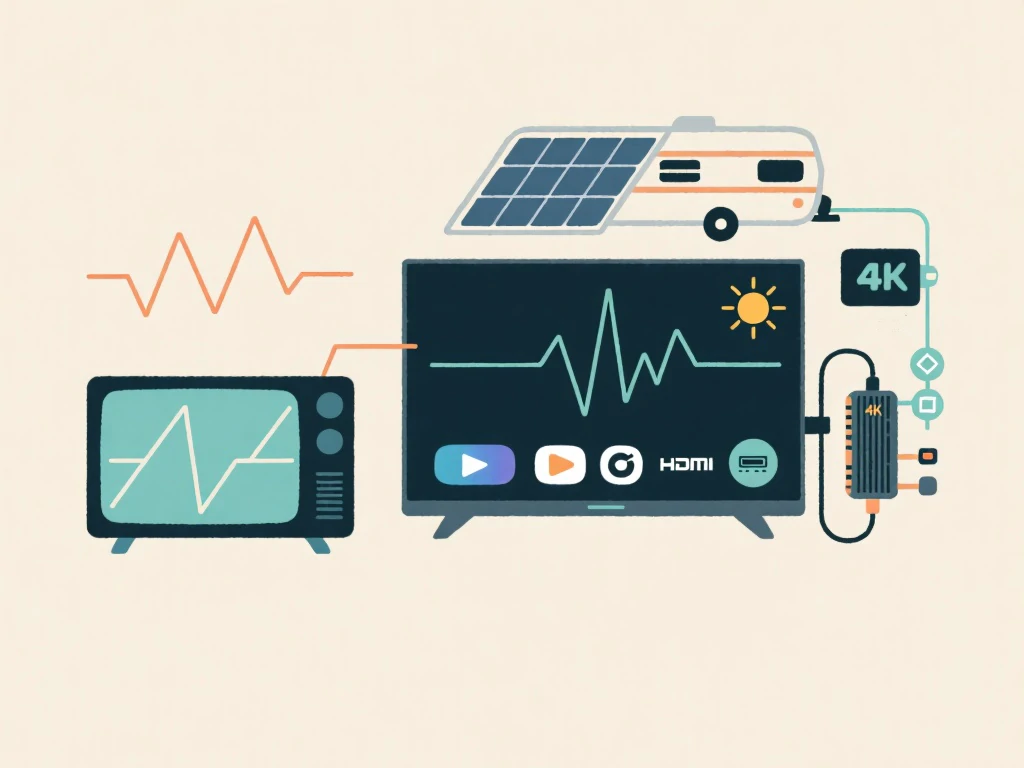
Choisir le bon onduleur pour votre téléviseur
De quelle taille d'onduleur avez-vous besoin pour faire fonctionner un téléviseur ?
Choisir le bon onduleur pour la télévision, ce n'est pas seulement choisir le premier que vous voyez sur Amazon. Il s'agit d'adapter la puissance de sortie de l'onduleur aux besoins en énergie de votre téléviseur, avec une petite marge de manœuvre supplémentaire.
La plupart des téléviseurs modernes consomment entre 30 et 200 watts, en fonction de leur taille et de leurs caractéristiques. Par exemple, un téléviseur LED de 32 pouces peut nécessiter environ 50 watts, tandis qu'un téléviseur intelligent de 55 pouces doté de toutes les fonctionnalités peut consommer de 120 à 180 watts. Toutefois, n'oubliez pas que ces chiffres reflètent une utilisation moyenne. Lors du démarrage, votre téléviseur peut avoir besoin d'une brève poussée d'énergie supplémentaire, appelée surtension.
Alors, comment choisir le bon onduleur pour la télévision ?
Voici une règle empirique rapide :
Puissance du téléviseur × 1,5 = puissance minimale de l'onduleur nécessaire.
Supposons que votre téléviseur consomme 100 watts. Multipliez cette puissance par 1,5 et vous obtenez 150 watts. Un onduleur de 150 W peut donc techniquement alimenter votre téléviseur. Mais en réalité, il est préférable de monter d'un cran, par exemple à 300 W, pour garantir un fonctionnement sûr et efficace, en particulier si vous utilisez d'autres appareils en même temps.
N'oubliez pas non plus de prendre en compte les accessoires connectés, tels qu'un boîtier de streaming, des haut-parleurs externes ou un lecteur de DVD. Ils augmentent la charge totale et doivent être pris en compte lors du dimensionnement de votre onduleur.
En choisissant un onduleur pour télévision qui offre une capacité légèrement supérieure, vous évitez de surcharger le système et vous assurez une plus longue durée de vie à votre onduleur et à votre télévision.
Un onduleur de 400 W peut-il faire fonctionner un téléviseur ?
Oui, un onduleur de 400 W permet de faire fonctionner la plupart des téléviseurs, et ce de manière tout à fait confortable.
En fait, 400 watts est une valeur idéale pour de nombreuses installations hors réseau. Cette puissance est suffisante pour faire fonctionner un téléviseur LED standard, un Roku ou un Fire Stick, et peut-être même une petite barre de son. Si vous faites du camping ou vivez dans un van et souhaitez profiter de Netflix à la belle étoile, un onduleur de 400 watts pour la télévision est souvent plus que suffisant.
Mais il y a d'importantes mises en garde à faire :
- Le type de téléviseur est important : Si vous utilisez un ancien téléviseur plasma, vous risquez de dépasser les limites d'un onduleur de 400 W, qui a tendance à être gourmand en énergie. Un téléviseur LED ou OLED plus récent consommera beaucoup moins.
- Surcharge au démarrage : Tenez toujours compte du fait que certains téléviseurs demandent plus d'énergie au démarrage. Un téléviseur de 120 W peut brièvement atteindre 180 W lorsqu'il est mis sous tension pour la première fois. Un onduleur de 400 W gère généralement cette surtension sans problème, mais vérifiez toujours la puissance nominale de l'onduleur pour vous en assurer.
- Autres appareils fonctionnant simultanément : Si vous prévoyez de brancher plusieurs appareils sur le même onduleur, la puissance totale devient critique. Une limite de 400 W signifie que tous les appareils connectés doivent rester en dessous de ce seuil combiné.
En résumé, si vous vous demandez si un onduleur de 400 W peut faire fonctionner un téléviseur, la réponse est oui - pour la plupart des téléviseurs, avec un peu de marge. Veillez simplement à vérifier votre installation spécifique pour éviter les surprises.
Onduleurs à onde sinusoïdale pure ou à onde sinusoïdale modifiée
Lors du choix du meilleur onduleur pour la télévision, l'une des décisions les plus négligées et pourtant essentielles est le type d'onde de sortie : onde sinusoïdale pure ou onde sinusoïdale modifiée.
Quelle est la différence ?
Onduleur à onde sinusoïdale pure
Ce type d'alimentation produit une forme d'onde lisse et propre, très similaire à l'électricité fournie par le réseau. Il est idéal pour les appareils électroniques sensibles, tels que les téléviseurs intelligents modernes, les systèmes audio, les ordinateurs portables et les consoles de jeu. Un onduleur sinusoïdal pur pour la télévision garantit des performances optimales et réduit le risque de bruit, de distorsion ou de dommages.
Onduleur sinusoïdal modifié
Ils sont plus économiques et fonctionnent bien avec les appareils de base. Toutefois, ils produisent un signal plus irrégulier, ce qui peut poser des problèmes avec certains téléviseurs. Vous pourriez constater un scintillement de l'écran, un bourdonnement des haut-parleurs ou même un refus d'allumer votre appareil.
Lequel choisir ?
Si votre téléviseur est relativement moderne et surtout s'il est doté de fonctions intelligentes ou d'appareils connectés en HDMI, il est fortement recommandé d'utiliser un onduleur sinusoïdal pour téléviseur. Il garantit que l'électricité qui alimente votre téléviseur est stable et sûre.
Les onduleurs sinusoïdaux modifiés peuvent toujours fonctionner pour les téléviseurs plus simples, mais il y a un problème : ils peuvent réduire la durée de vie de votre appareil ou causer des problèmes de performance gênants au fil du temps. Si votre budget le permet, optez toujours pour l'onde sinusoïdale pure, en particulier si votre installation TV et 12 volts comprend plusieurs appareils électroniques connectés.
Tableau de comparaison rapide
| Fonctionnalité | Onde sinusoïdale pure | Onde sinusoïdale modifiée |
| Prix | Plus élevé | Plus bas |
| Compatibilité | Tous les appareils | Limitée |
| Performance télévisuelle | Douceur et sécurité | Peut causer du bruit/des problèmes |
| Efficacité énergétique | Plus élevé | Légèrement inférieur |
| Longévité des appareils | Mieux | Réduit la durée de vie |
En résumé, que vous souhaitiez alimenter un téléviseur en 12 volts dans un camping-car ou utiliser un téléviseur de grande taille hors réseau, le choix du bon onduleur pour télévision fait toute la différence. Ne vous contentez pas de penser en termes de watts, mais tenez compte de la forme d'onde, de la gestion des surtensions et de vos besoins futurs. Votre séance de "binge-watching" en dépend !
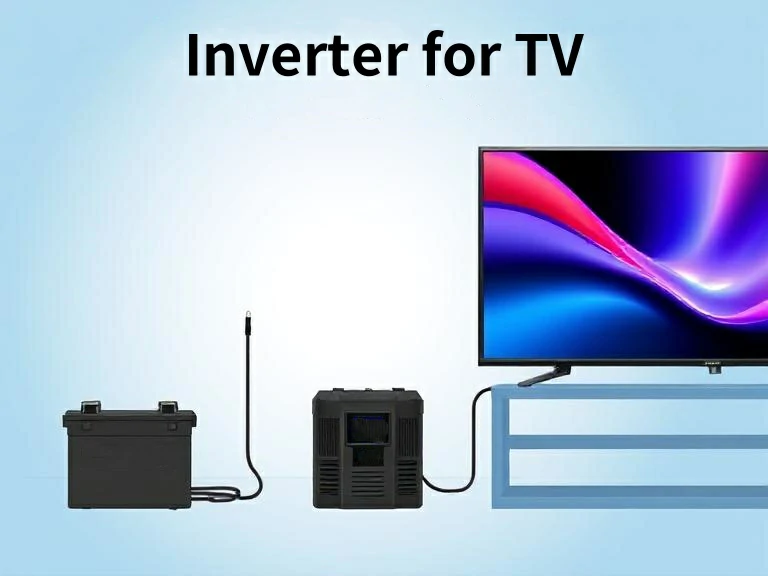
Combien de temps un téléviseur peut-il fonctionner avec un onduleur ?
L'une des questions les plus fréquemment posées lors de l'installation d'un système de divertissement hors réseau est la suivante : "Combien de temps mon téléviseur fonctionnera-t-il sur un onduleur ?" Bien qu'il n'y ait pas de réponse unique, le fait de comprendre comment l'onduleur pour la télévision, le parc de batteries et la télévision fonctionnent ensemble vous permettra d'estimer la durée de fonctionnement avec beaucoup plus de précision.
Que vous planifiez un week-end de camping ou que vous conceviez une installation solaire pour votre véhicule récréatif, le fait de savoir combien de temps vous pouvez compter sur votre onduleur pour la télévision vous permet d'éviter d'être à court de jus en plein milieu d'un film.
Comprendre la durée d'utilisation en fonction de la taille de la batterie et de l'onduleur
Pour calculer la durée d'un TV en 12 volt peut fonctionner avec un onduleur, vous devez tenir compte de trois facteurs clés :
- Consommation électrique du téléviseur (en watts)
- Efficacité de l'onduleur (généralement 85%-95%)
- Capacité de la batterie (en ampères-heures ou Ah)
Voici une formule simplifiée que vous pouvez utiliser :
Durée d'utilisation (en heures) = (Capacité de la batterie × Tension de la batterie × Efficacité de l'onduleur) / Puissance du téléviseur
Prenons un exemple. Imaginez que vous ayez :
- Une batterie 12V à décharge profonde de 100Ah
- Un onduleur sinusoïdal pour la télévision avec un rendement de 90%
- UN TÉLÉVISEUR LED 60W
Le calcul est le suivant :
Durée d'utilisation = (100Ah × 12V × 0,9) / 60W
Durée d'exécution ≈ 18 heures
Cela signifie que vous pouvez théoriquement faire fonctionner votre téléviseur pendant environ 18 heures avec une batterie de 100 Ah complètement chargée, en supposant que rien d'autre ne consomme de l'énergie et que les conditions sont idéales.
Mise en garde importante : les onduleurs eux-mêmes consomment de l'énergie, même lorsqu'aucun appareil n'est connecté. Prévoyez toujours une marge supplémentaire pour la consommation de l'onduleur et les surtensions au démarrage du téléviseur. Évitez également de décharger les batteries au plomb en dessous de 50% si vous voulez préserver leur santé.
Si vous utilisez un téléviseur en 12 volts directement sans onduleur, vous obtiendrez naturellement une plus longue durée de fonctionnement car vous sautez le processus de conversion de l'énergie, ce qui réduit la perte d'énergie.
Mais l'utilisation d'un onduleur pour la télévision vous permet d'alimenter les téléviseurs domestiques standard de 120V ou 230V, ce qui vous donne plus de flexibilité et de compatibilité avec les téléviseurs intelligents modernes.
Combien de temps un téléviseur fonctionnera-t-il avec un onduleur de 1000 W ?
Un onduleur de 1000 watts pour la télévision peut facilement prendre en charge à peu près n'importe quel téléviseur sur le marché aujourd'hui. En fait, la plupart des téléviseurs consomment bien moins de 1 000 watts - plutôt 50 à 200 watts, selon leur taille et selon qu'il s'agit d'un écran LED de base ou d'un modèle OLED plus gourmand en énergie.
Mais la vraie question n'est pas de savoir s'il peut alimenter le téléviseur (la réponse est presque toujours oui), mais plutôt combien de temps il peut le faire.
Examinons deux scénarios différents :
Scénario 1 : Configuration de base
- Consommation électrique du téléviseur : 100W
- Taille de l'onduleur : 1000W
- Batterie : 12V, 100Ah
- Efficacité de l'onduleur : 90%
Durée d'utilisation = (100Ah × 12V × 0,9) / 100W
Durée d'utilisation = 10,8 heures
Ainsi, même avec une batterie modeste, un onduleur de 1000 W peut faire fonctionner un téléviseur de taille standard pendant plus de 10 heures d'affilée.
Scénario 2 : Grande installation avec Smart TV et extras
- Utilisation de la télévision : 180W (grande télévision intelligente)
- Plus : Clé de streaming (10W), barre de son (20W)
- Charge totale : ~210W
- Batterie : 12V, 150Ah
Durée d'utilisation = (150Ah × 12V × 0,9) / 210W
Durée d'exécution ≈ 7.7 heures
Il reste assez solide pour une nuit de Netflix ou un week-end hors réseau.
Que se passe-t-il si j'utilise une installation solaire ?
Excellente question. Si votre batterie est rechargée par des panneaux solaires pendant que vous regardez la télévision, votre autonomie est potentiellement indéfinie, tant que vous produisez suffisamment d'électricité pour répondre à votre consommation. C'est là qu'un onduleur bien dimensionné pour la télévision et le système solaire peut vraiment briller.
Réflexions finales sur l'autonomie des onduleurs de 1000W
- Un onduleur de 1000W ne signifie pas qu'il utilise 1000W, mais qu'il peut gérer jusqu'à 1000W.
- La plupart des téléviseurs n'utilisent qu'une fraction de cette capacité.
- La vraie limite est la taille de votre batterie, pas celle de l'onduleur.
Vous pouvez donc faire fonctionner votre téléviseur en toute confiance avec un onduleur de 1000 W, souvent pendant plusieurs heures, et même plus longtemps avec une batterie plus importante ou un support solaire.

Les erreurs à éviter lors de l'utilisation d'un onduleur pour la télévision
Bien que le réglage de votre onduleur pour la télévision puisse sembler assez simple - branchez-le, allumez-le et détendez-vous avec votre émission préférée - il existe quelques pièges étonnamment courants qui peuvent affecter les performances, gaspiller de l'énergie ou même endommager votre équipement. Que vous construisiez un système de divertissement mobile dans votre véhicule de loisirs ou que vous essayiez simplement de rester alimenté pendant les pannes à la maison, éviter ces erreurs vous fera gagner du temps, de l'argent et de la frustration.
Voyons ce qu'il ne faut pas faire lorsque l'on utilise un onduleur pour la télévision et, surtout, comment éviter chaque erreur.
Choisir la mauvaise taille d'onduleur
L'une des erreurs les plus fréquentes et les plus coûteuses consiste à choisir un onduleur trop petit ou inutilement surdimensionné par rapport à la configuration de la télévision.
Il est tentant de penser : "Plus c'est grand, mieux c'est". Mais dans le monde des onduleurs pour téléviseurs, la taille doit correspondre à vos besoins. Trop petit, votre onduleur ne pourra même pas allumer le téléviseur. S'il est trop grand, vous risquez de gaspiller l'énergie de la batterie en raison d'une consommation au ralenti et d'une efficacité moindre à charge partielle.
Par exemple :
Si votre téléviseur consomme 100 watts, vous n'avez pas besoin d'un onduleur de 1500 watts. Un onduleur de 300 à 400 W pour la télévision fera parfaitement l'affaire. La surenchère n'est pas seulement plus coûteuse au départ, elle épuise aussi votre batterie plus rapidement lorsque l'onduleur fonctionne de manière inefficace à faible charge.
Calculez toujours la puissance combinée de votre téléviseur et de tout appareil supplémentaire tel qu'une barre de son, une clé de lecture en continu ou un lecteur DVD. Ajoutez ensuite une marge de 20-30% pour les surtensions de démarrage. C'est la taille de votre onduleur cible.
- Conseil de pro : De nombreux téléviseurs modernes consomment moins de 150 watts, ce qui signifie qu'un onduleur de 400 watts est souvent plus que suffisant - assurez-vous simplement qu'il s'agit d'un modèle à onde sinusoïdale pure pour une compatibilité totale.
Ignorer la capacité et le type de batterie
Même avec l'onduleur idéal pour la télévision, votre système ne vaut que ce que vaut la batterie qui l'alimente. Sous-estimer votre alimentation électrique - ou ne pas l'adapter à votre onduleur - peut sérieusement limiter l'autonomie ou entraîner des décharges profondes préjudiciables.
Les gens demandent souvent : "Quelle est la durée de fonctionnement d'un téléviseur sur un onduleur ?" La réponse honnête est : cela dépend entièrement de votre batterie.
Supposons que vous utilisiez une batterie de 12 V et 100 Ah avec un téléviseur de 90 watts. Sur le papier, vous pourriez obtenir près de 12 heures d'autonomie. Mais si vous utilisez une batterie au plomb, vous ne devez pas la décharger en dessous de 50%. Cela réduit de moitié la puissance utilisable.
En outre, les différents types de piles se comportent différemment :
- Plomb-acide (AGM, gel) : Moins chères, mais plus lourdes et moins efficaces.
- Lithium (LiFePO4) : Plus cher, mais durée de vie plus longue, décharge plus profonde et plus légère.
Si votre système TV en 12 volts utilise des batteries obsolètes ou mal adaptées, peu importe l'efficacité de votre onduleur pour TV, vous serez à court d'énergie plus tôt que vous ne le pensez.
- Alerte à l'erreur : l'association d'un petit parc de batteries avec un onduleur de forte puissance peut entraîner des chutes de tension, une surchauffe de l'onduleur ou l'arrêt complet du système. Connaissez les limites de votre batterie.
Utilisation de l'onde sinusoïdale modifiée avec les téléviseurs intelligents
Tous les onduleurs pour téléviseurs ne sont pas identiques. Le choix entre un onduleur à onde sinusoïdale modifiée et un onduleur à onde sinusoïdale pure est un point de décision important. Voici pourquoi cela est important, surtout si vous alimentez un téléviseur intelligent.
Un onduleur sinusoïdal modifié produit une approximation grossière et échelonnée du courant alternatif. Si les appareils électroniques de base plus anciens peuvent le tolérer, de nombreux téléviseurs modernes, en particulier les téléviseurs intelligents dotés de circuits internes sensibles, ont du mal ou refusent de fonctionner correctement avec ce type d'alimentation. Vous pouvez rencontrer :
- Distorsion de l'audio ou de la vidéo
- Surchauffe des briques d'alimentation
- Ecrans vacillants
- Réduction de la durée de vie des téléviseurs
Un onduleur à onde sinusoïdale pure, en revanche, fournit une énergie propre et stable qui reflète ce que vous obtiendriez d'une prise murale standard. C'est ce que votre téléviseur attend et ce dont il a besoin pour une utilisation sûre et à long terme.
- L'erreur du monde réel : Un voyageur achète un onduleur sinusoïdal modifié de 600 W pour sa télévision intelligente et sa barre de son. Au début, il semble fonctionner... mais au bout de quelques minutes, l'écran clignote et s'éteint. Après avoir opté pour un onduleur à onde sinusoïdale pure pour la télévision, le problème disparaît.
Ne laissez pas un onduleur bon marché mettre en péril votre matériel de divertissement coûteux. Si vous avez investi dans une télévision intelligente haut de gamme, l'investissement dans un onduleur sinusoïdal pour télévision n'est tout simplement pas négociable.
Conclusion
Nos recommandations d'experts
- Pour les véhicules récréatifs : Un onduleur de 400 W à onde sinusoïdale pure pour la télévision ou la télévision 12 V.
- Pour la sauvegarde de la maison : Un onduleur de 1000 W avec des batteries à cycle profond
- Pour les installations hors réseau : Combinaison solaire + batterie au lithium + onduleur
Que vous fassiez du camping sauvage, que vous vous prépariez à des pannes d'électricité ou que vous soyez totalement hors réseau, il est essentiel d'avoir le bon onduleur pour la télévision. Évaluez vos besoins, mesurez vos charges et optez pour un produit de qualité. Il ne s'agit pas seulement de regarder Netflix, mais aussi d'avoir l'esprit tranquille. Si vous souhaitez en savoir plus sur les solutions solaires domestiques ou commerciales, vous pouvez consulter le site d'Afore, l'un des principaux fournisseurs d'énergie solaire. fabricants d'onduleurs solaires dans le monde.
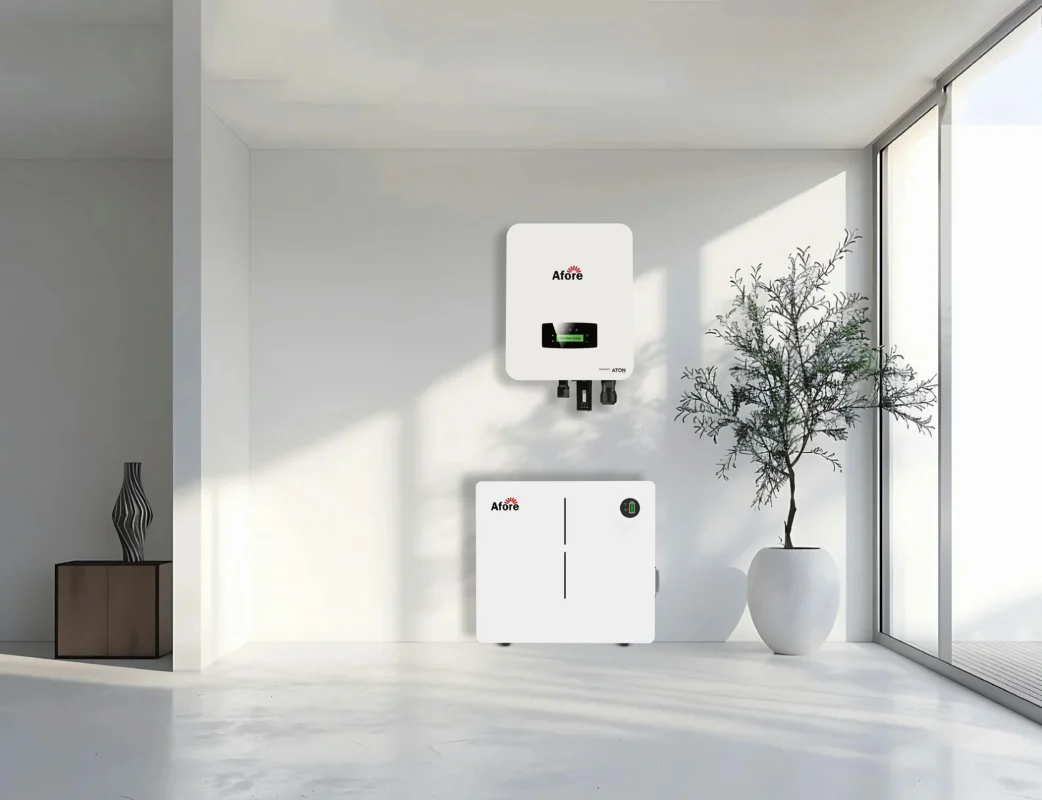
FAQ sur les onduleurs pour téléviseurs
Peut-on faire fonctionner un téléviseur sur 12V ?
Oui, absolument. De nombreux téléviseurs compacts sont conçus pour fonctionner directement sur 12 V CC, en particulier ceux destinés aux véhicules de loisirs ou aux caravanes. Ils sont souvent commercialisés sous le nom de TV en 12 volts, conçus pour se brancher directement sur une batterie de voiture ou une prise d'allume-cigare.
Toutefois, si votre téléviseur est un modèle domestique standard qui nécessite une alimentation en courant alternatif, vous aurez besoin d'un onduleur pour téléviseur afin de convertir le courant continu de 12 V de votre batterie en courant alternatif de 110 V ou 220 V utilisable.
La réponse courte ? Oui, mais cela dépend du téléviseur. S'il ne s'agit pas spécifiquement d'un téléviseur à 12 volts, vous aurez besoin d'un bon onduleur pour téléviseur pour le faire fonctionner.
Qu'est-ce qu'un onduleur pour un téléviseur ?
Un onduleur pour téléviseur est un appareil qui convertit le courant continu (CC) d'une batterie - généralement de 12 ou 24 V - en courant alternatif (CA), dont la plupart des téléviseurs standard ont besoin pour fonctionner.
Considérez-le comme votre pont d'alimentation hors réseau. Que vous utilisiez l'énergie solaire, une batterie de véhicule ou même une centrale électrique portable, un onduleur pour téléviseur vous permet d'alimenter votre appareil de divertissement préféré lorsque vous êtes loin du réseau.
- Un onduleur sinusoïdal pour téléviseur est le meilleur choix, en particulier pour les téléviseurs intelligents modernes, car il fournit un courant propre et stable, comme celui qui provient d'une prise murale domestique.
Puis-je faire fonctionner mon téléviseur avec un onduleur ?
Oui, c'est possible. En fait, des milliers de personnes le font chaque jour dans leurs camping-cars, leurs cabanes et même leurs maisons pendant les pannes.
Tout ce dont vous avez besoin est :
- A TV
- Une batterie
- Le bon onduleur pour la télévision
- Connaissance de base de la puissance et de la consommation d'énergie
Adaptez la taille de l'onduleur à la puissance de votre téléviseur (plus un peu de marge), et le tour est joué. Veillez simplement à utiliser un onduleur pour téléviseur qui fournit un courant propre (idéalement une onde sinusoïdale pure) et à ce que votre batterie ait suffisamment de jus pour supporter la charge.
Combien de temps un téléviseur fonctionnera-t-il avec un onduleur ?
Cela dépend de deux facteurs principaux :
- La consommation électrique de votre téléviseur (généralement de 60 à 150 W)
- La taille et le type de votre batterie (mesurée en Ah)
Voici un exemple rapide :
Une batterie 12V de 100Ah a environ 1200Wh d'énergie utilisable (si elle est au lithium) ou 600Wh (si elle est au plomb-acide à une profondeur de décharge de 50%). Un téléviseur de 100 W fonctionnerait pendant :
- 6 heures pour le plomb-acide
- 12 heures au lithium
Bien entendu, si vous ajoutez d'autres appareils ou si vous utilisez un onduleur moins efficace pour la télévision, l'autonomie sera réduite.
- Conseil de pro : Calculez toujours un tampon de 15-20% pour la perte de l'onduleur et le démarrage de la surtension. Même le meilleur onduleur pour téléviseur présente une certaine inefficacité.
Un onduleur de 400 W peut-il faire fonctionner un téléviseur ?
Dans la plupart des cas, oui. Un onduleur de 400 W pour téléviseur est généralement plus que suffisant pour faire fonctionner des téléviseurs à LED, qui consomment souvent entre 60 W et 150 W.
Cependant, vous devrez tenir compte de la taille du téléviseur, de la marque et de tout appareil supplémentaire (comme les clés Roku ou les consoles de jeu). Vérifiez également que votre onduleur pour téléviseur est de type sinusoïdal pur pour garantir la compatibilité avec toutes les marques et tous les modèles.
Les onduleurs de 400 W sont également compacts et efficaces, ce qui les rend parfaitement adaptés aux petites installations de camping ou aux kits d'urgence.
De quelle taille d'onduleur ai-je besoin pour un téléviseur de 55 pouces ?
Un téléviseur LED de 55 pouces consomme généralement entre 100 et 160 watts, selon la marque et le modèle. Par mesure de sécurité, il est recommandé d'utiliser un onduleur de 300 à 500 watts pour un téléviseur de 55 pouces.
Veillez à :
- Utiliser un onduleur à onde sinusoïdale pure pour la télévision
- Laisser une marge de manœuvre de 20-30% pour les surtensions de démarrage
- Prendre en compte les accessoires éventuels (systèmes audio, dispositifs HDMI).
Ne vous fiez pas uniquement à la taille de l'écran : vérifiez l'étiquette au dos de votre téléviseur ou le manuel d'utilisation pour connaître les exigences en matière de puissance.
Puis-je faire fonctionner plusieurs appareils avec le téléviseur sur un onduleur ?
Oui, mais vous devrez additionner la puissance totale et vous assurer que votre onduleur peut la supporter.
Par exemple :
- TV 55″ = 130W
- Barre de son = 40W
- Clé de lecture = 10W
- Lampes LED = 20W
Total = 200W
Dans ce cas, un onduleur de 400 W pour la télévision suffira amplement. Mais n'oubliez pas de tenir compte de la capacité de la batterie : faire fonctionner plusieurs appareils consomme plus d'énergie, plus rapidement.
L'utilisation d'un onduleur pour télévision de haute qualité, doté d'une protection contre les surtensions et d'une puissance suffisante, est essentielle si vous prévoyez d'alimenter plus que votre écran.
Que se passe-t-il si j'utilise un onduleur à onde sinusoïdale modifiée avec mon téléviseur ?
C'est là que les choses se compliquent. Alors que les anciens écrans cathodiques ou les écrans plats très basiques peuvent fonctionner avec un onduleur sinusoïdal modifié, les téléviseurs intelligents modernes ne réagissent souvent pas bien, voire pas du tout.
Les thèmes abordés sont les suivants :
- Ecrans vacillants
- Bourdonnement audio
- Problèmes de lecture vidéo
- Surchauffe des circuits internes
- Dommages potentiels à long terme
Un onduleur TV à onde sinusoïdale pure reproduit le flux d'énergie régulier du réseau électrique et est 100% sans danger pour vos appareils électroniques. Ne prenez pas le risque d'acheter un téléviseur coûteux avec un onduleur moins cher, cela n'en vaut pas la peine.
Est-il préférable d'acheter un téléviseur 12V ou d'utiliser un onduleur ?
Cela dépend de votre situation.
Un téléviseur en 12 volts est conçu spécifiquement pour les véhicules de loisirs, les bateaux ou les camping-cars. Il est économe en énergie, facile à alimenter directement à partir de votre batterie 12V et ne nécessite pas d'onduleur.
Cependant, les téléviseurs de 12 V sont généralement.. :
- Plus cher
- Taille de l'écran plus petite
- Fonctionnalités limitées par rapport aux téléviseurs domestiques
Si vous possédez déjà un téléviseur ordinaire ou si vous souhaitez un téléviseur plus grand doté de fonctions intelligentes, il est plus judicieux d'investir dans un onduleur de haute qualité pour téléviseur. Il vous offre plus de flexibilité, surtout lorsqu'il est associé à un bon banc de batteries.
- Le meilleur des deux mondes : utilisez un téléviseur 12V lorsque la taille et l'efficacité sont les plus importantes ; utilisez un téléviseur standard avec un onduleur pour la télévision lorsque vous souhaitez bénéficier de toutes les fonctions et que vous n'êtes pas gêné par la légère perte d'efficacité énergétique.
Quel est le moyen le plus économe en énergie pour regarder la télévision hors réseau ?
Voici comment regarder la télévision hors réseau sans épuiser votre système :
- Utiliser une TV LED ou une TV en 12 volts à faible consommation d'énergie
- Associez-le à un onduleur à onde sinusoïdale pure pour la télévision avec un rendement de 90%+.
- Utiliser des piles au lithium pour une décharge plus profonde et une plus grande autonomie.
- Désactiver les modes veille et les périphériques inutiles (par exemple, les consoles de jeux).
- Installer des panneaux solaires pour recharger la batterie pendant la journée
L'efficacité dépend de la bonne combinaison de matériel. Un onduleur surdimensionné ou une batterie inefficace réduiront votre autonomie. Une planification intelligente = des soirées cinéma plus longues.




